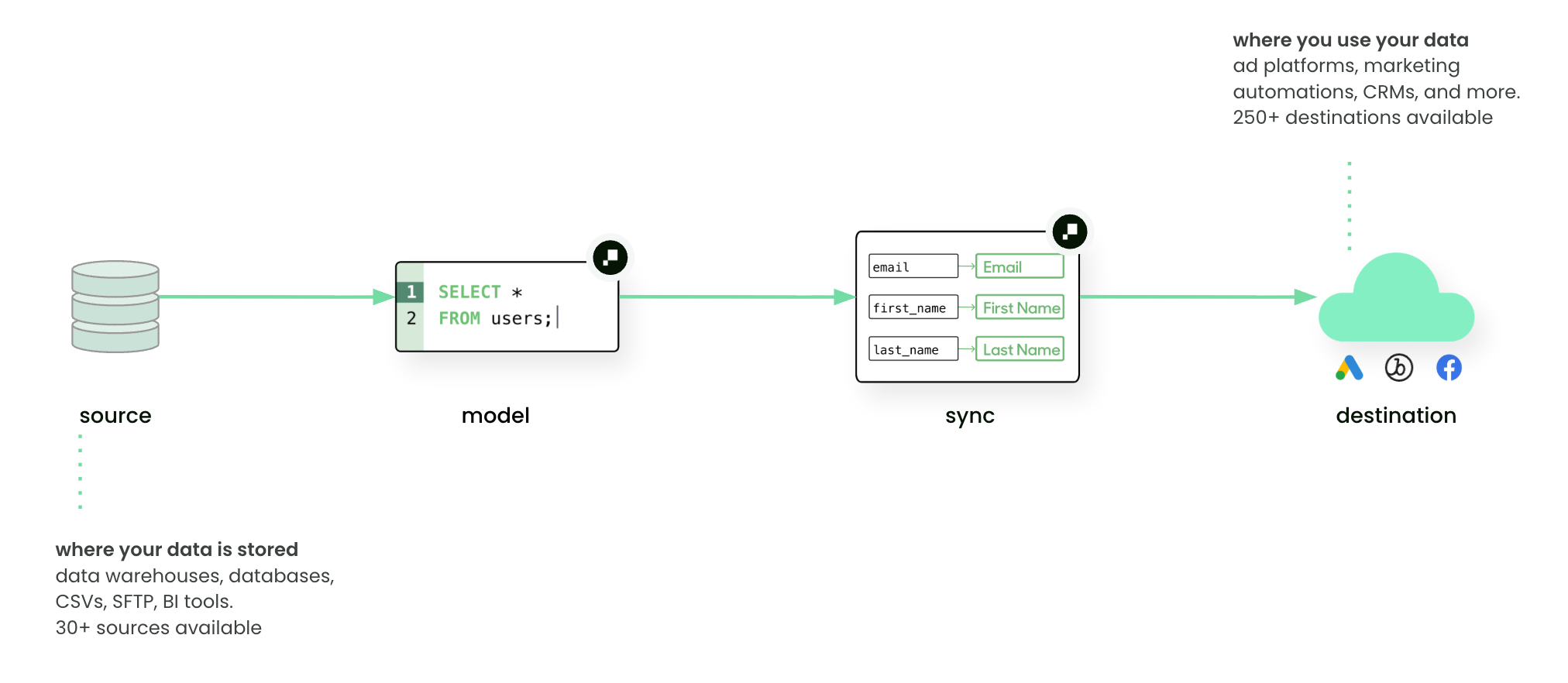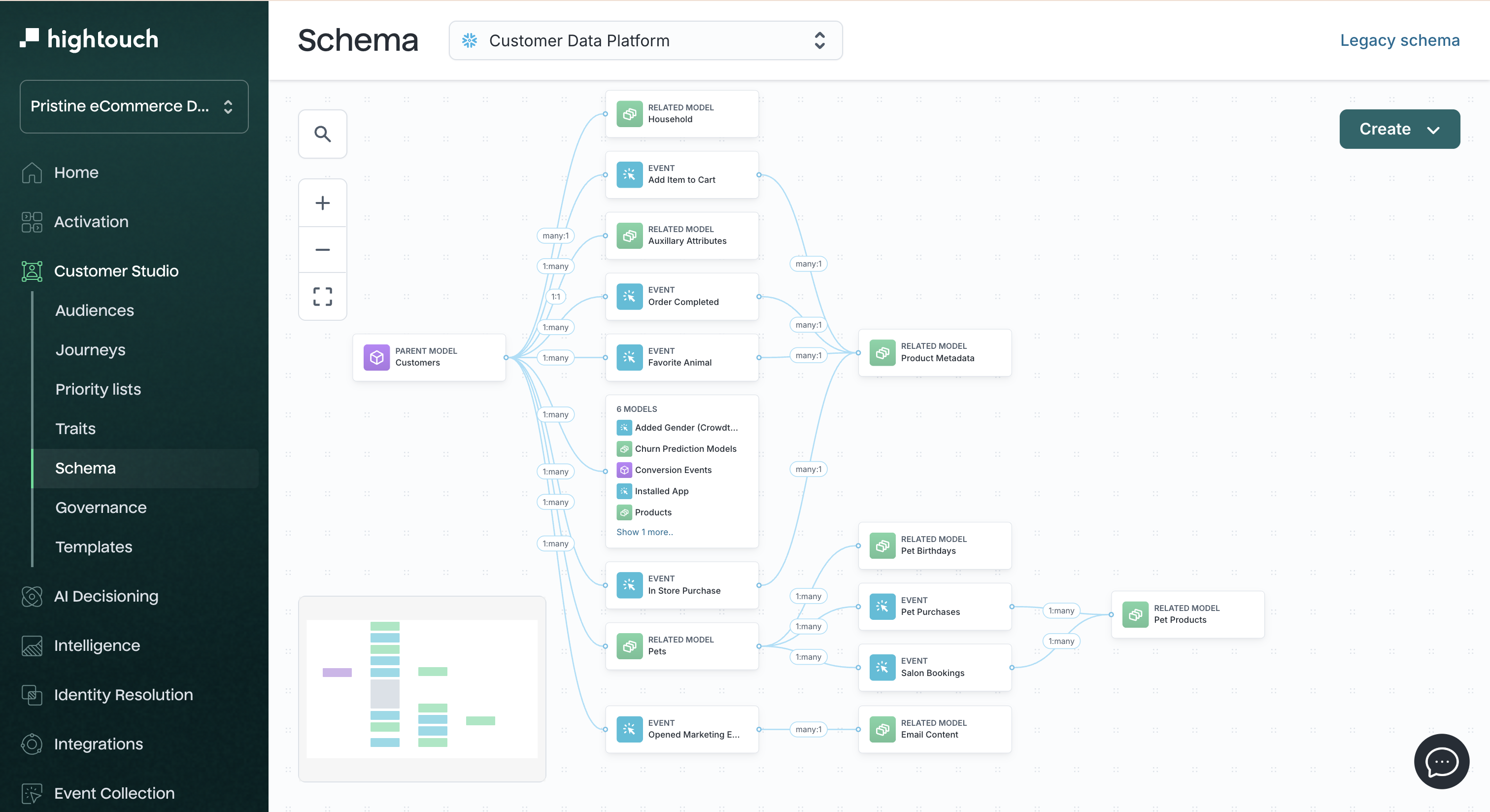| Audience | Data engineers, analytics teams |
| Prerequisites |
Connect your data warehouse, configure sync infrastructure, and prepare datasets so marketers can build and activate audiences directly in Hightouch.
Before you begin, review the Data activation concepts, which explain sources, models, syncs, destinations, and Change Data Capture (CDC). This article focuses on the hands-on setup work for data teams.
Setup steps
1. Connect your data
Connect your warehouse as the source of truth for all activation.
-
Add your primary data source (e.g., Snowflake, Databricks, BigQuery, Redshift) from Integrations → Sources.
-
(Optional) Connect additional data sources such as databases, APIs, or SaaS tools if they’re part of your activation strategy.

Hightouch syncs modeled data from your warehouse to destinations through sources, models, and syncs.
2. Configure sync infrastructure
Set up the systems that power reliable, performant syncs between your warehouse and marketing tools.
-
Lightning Sync Engine
Use Change Data Capture (CDC) to detect and sync only changed records. This enables features like Identity Resolution, warehouse sync logs, and audience holdouts. -
Warehouse Sync Logs
Write sync metadata—such as row counts, errors, and rejected records—back to your warehouse for monitoring and visibility. -
Destinations
Connect downstream tools (e.g., Braze, Salesforce, ad platforms) where marketers will activate audiences and campaigns.
3. Define your schema
Define the data structure that marketers will use in Customer Studio to build audiences and campaigns.
This is typically a one-time setup owned by data teams.
- Parent model: The main dataset (for example, your
userstable) - Related models: Supporting entities such as accounts, subscriptions, or products
- Events: Timestamped actions (purchases, logins, cancellations)
- Relationships: Connections between models via foreign keys

Data teams define parent, related, and event models. Marketers use these attributes in Customer Studio to build audiences.
4. Security and change management
Security and workspace-level governance are usually managed by IT or platform admins.
As a data team, coordinate with IT to ensure:
- Environments are available for staging models and syncs
- Audit logs and approval flows are enabled per compliance policies
→ Workspace setup (IT & admins)
5. Extend your setup (optional)
Add additional Composable CDP products to enhance audience accuracy, personalization, and activation.
-
Identity Resolution: Bring customer data together into unified profiles by merging records across identifiers (email, phone, device ID).
-
Events: Stream or batch event data from your apps or warehouse to trigger campaigns when customers take action.
-
Match Booster: Improve ad platform match rates by enriching records with additional identifiers (e.g., emails or phone numbers).
Learn how these products fit together in the Composable CDP overview →